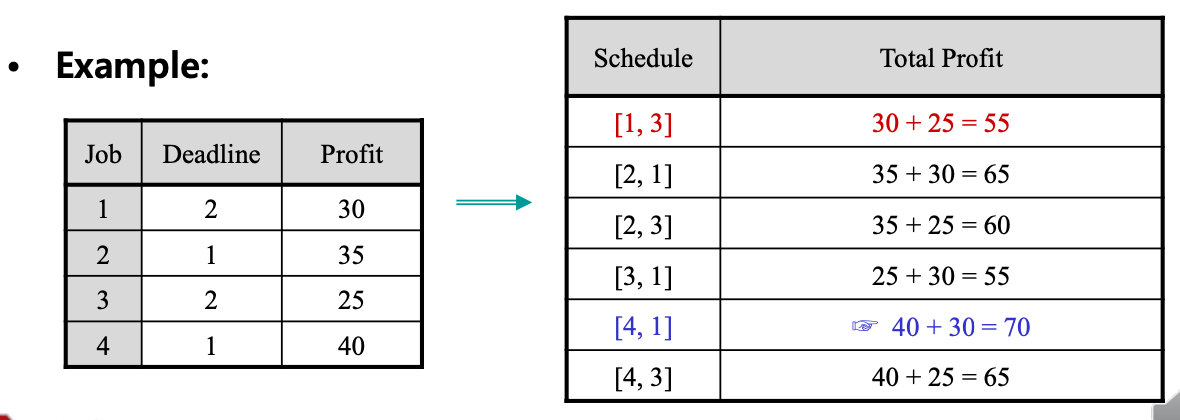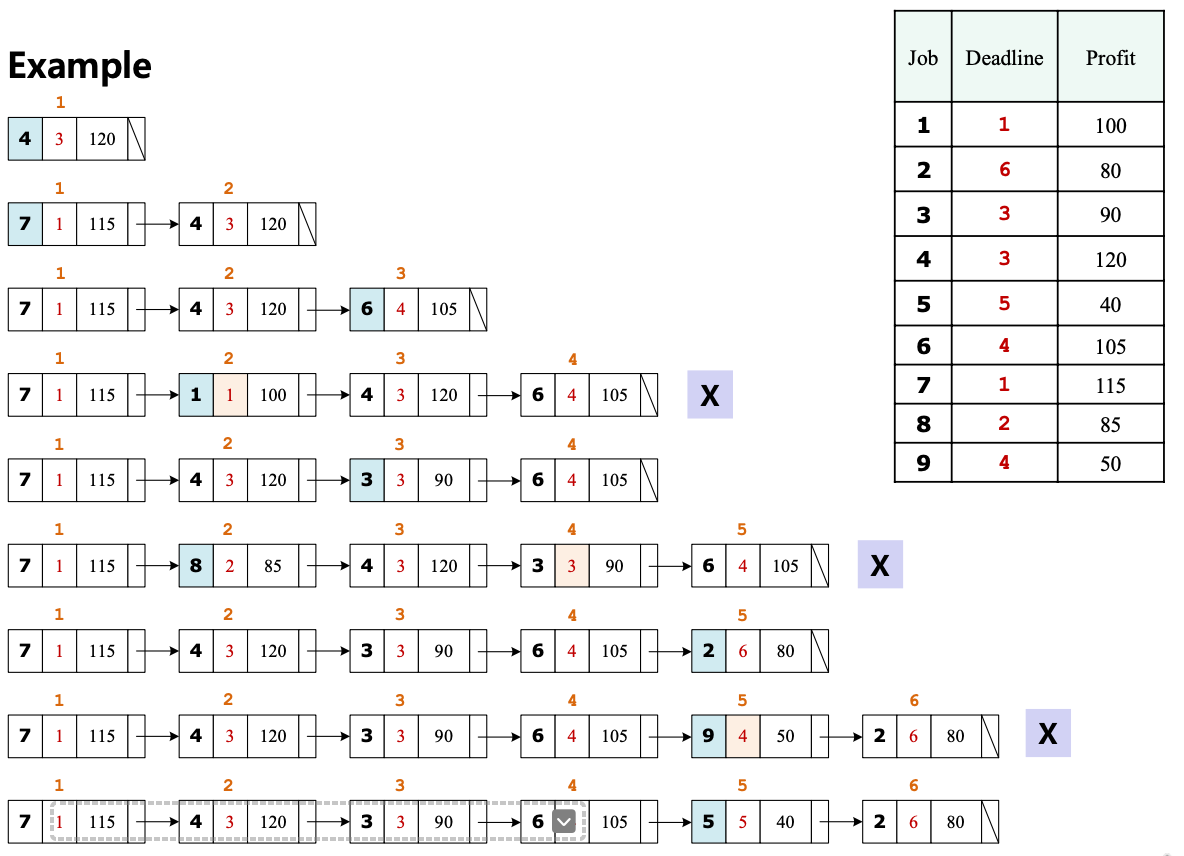#
5.7. Scheduling with Deadlines
In
#
Problem
- Let J = \{1, 2, ..., n\} be a set of jobs to be served.
- Each job takes one unit of time to finish.
- Each job has a deadline and a profit.
- If the job starts before or at its deadline, the profit is obtained.
- Schedule the jobs so as to maximize the total profit (not all jobs have to be scheduled).

#
Example:

#
A greedy approach
- Sort the jobs in non-increasing order by profit.
- Scan each job in the sorted list, adding it to the schedule if possible.

#
Example
- S = EMPTY
- Is S = {1} OK?
- Yes: S \leftarrow {1} ([1])
- Is S = {1, 2} OK?
- Yes: S \leftarrow {1, 2} ([2, 1])
- Is S = {1, 2, 3} OK?
- No.
- Is S = {1, 2, 4} OK?
- Yes: S \leftarrow {1, 2, 4} ([2, 1, 4] or [2, 4, 1])
- Is S = {1, 2, 4, 5} OK?
- No.
- Is S = {1, 2, 4, 6} OK?
- No.
- Is S = {1, 2, 4, 7} OK?
- No.

- No.
#
Example

#
Implementation Issues
- A key operation in the greedy approach
- Determine if a set of jobs S is feasible.
- Fact
- S is feasible if and only if the sequence obtained by ordering the jobs in S according to nondecreasing deadlines is feasible.
- Example
- Is S = \{1, 2, 4\} OK?→$[2(1), 1(3), 4(3)]$→Yes!
- Is S = \{1, 2, 4, 7\} OK?→$[2(1), 7(2), 1(3), 4(3)]$→No
- An $O(n^2)$implementation
- Sort the jobs in non-increasing order by profit.
- For each job in the sorted order,
- See if the current job can be scheduled together with the previously selected jobs, using a linked list data structure.
- If yes, add it to the list of feasible sequence.
- Otherwise, reject it.
- See if the current job can be scheduled together with the previously selected jobs, using a linked list data structure.
- Time complexity
- O(n \log n) + \Sigma_{i=2}^{n}{\{(i-1)+i\}} = O(n^2)
- When there are i-1 jobs in the sequence,
- at most i-1 comparisons are needed to add a new job in the sequence, and
- at most i comparisons are needed to check if the new sequence is feasible.
- Is the time complexity always O(n^2)?
- What if n >> d_{max}?
- O(n \log n+n d_{max})
- What if n >> d_{max} and n >> k_{scanned}?
- O(n + k_{scanned} \log n + k_{scanned} d_{max}) = O(n)
- Is this complexity achievable when a max heap data structure is employed

- What if n >> d_{max}?
#
Correctness of the Greedy Method
- Left as an exercise.